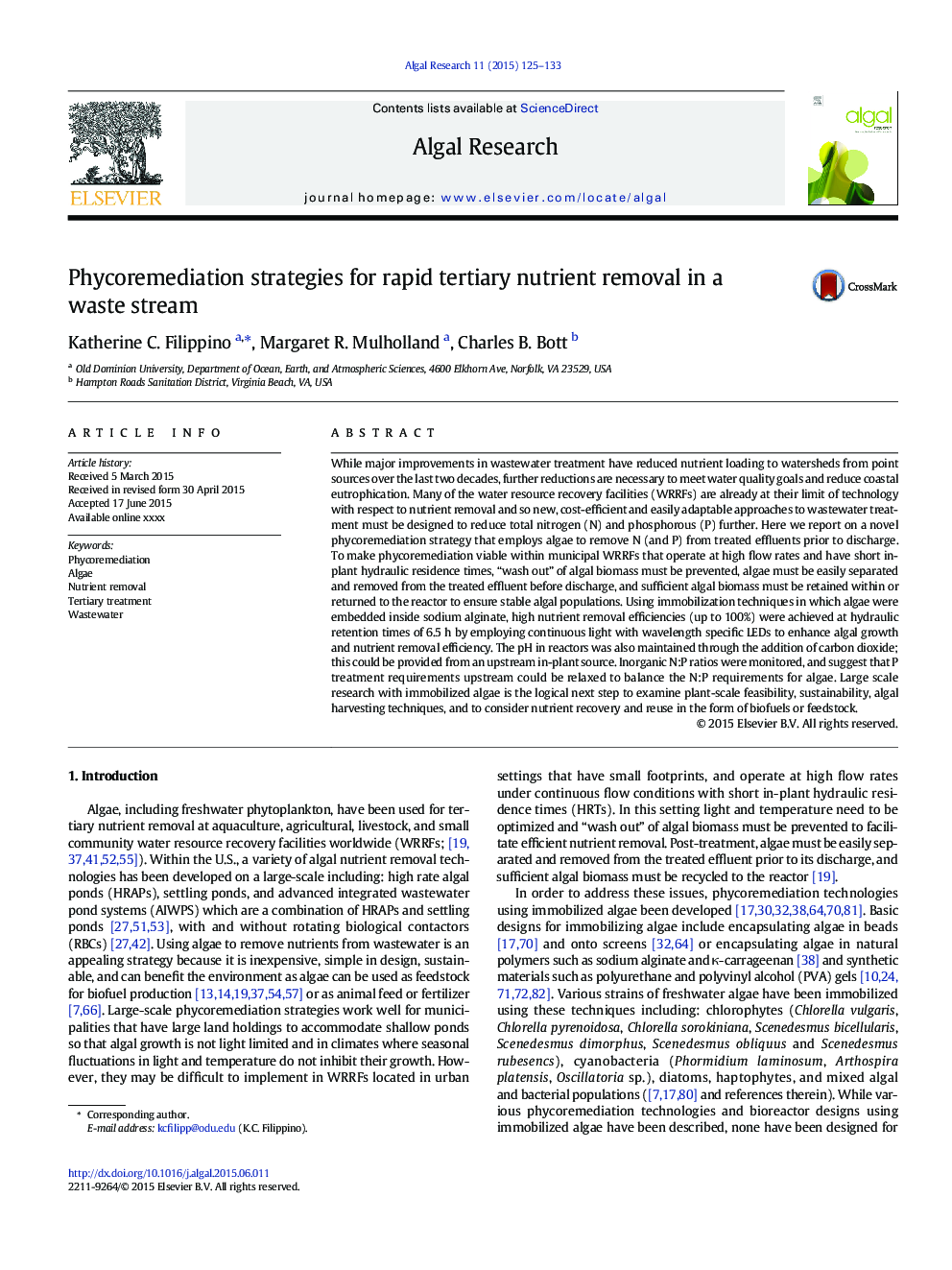| کد مقاله | کد نشریه | سال انتشار | مقاله انگلیسی | نسخه تمام متن |
|---|---|---|---|---|
| 8087987 | 1521821 | 2015 | 9 صفحه PDF | دانلود رایگان |
عنوان انگلیسی مقاله ISI
Phycoremediation strategies for rapid tertiary nutrient removal in a waste stream
دانلود مقاله + سفارش ترجمه
دانلود مقاله ISI انگلیسی
رایگان برای ایرانیان
کلمات کلیدی
موضوعات مرتبط
مهندسی و علوم پایه
مهندسی انرژی
انرژی های تجدید پذیر، توسعه پایدار و محیط زیست
پیش نمایش صفحه اول مقاله

چکیده انگلیسی
While major improvements in wastewater treatment have reduced nutrient loading to watersheds from point sources over the last two decades, further reductions are necessary to meet water quality goals and reduce coastal eutrophication. Many of the water resource recovery facilities (WRRFs) are already at their limit of technology with respect to nutrient removal and so new, cost-efficient and easily adaptable approaches to wastewater treatment must be designed to reduce total nitrogen (N) and phosphorous (P) further. Here we report on a novel phycoremediation strategy that employs algae to remove N (and P) from treated effluents prior to discharge. To make phycoremediation viable within municipal WRRFs that operate at high flow rates and have short in-plant hydraulic residence times, “wash out” of algal biomass must be prevented, algae must be easily separated and removed from the treated effluent before discharge, and sufficient algal biomass must be retained within or returned to the reactor to ensure stable algal populations. Using immobilization techniques in which algae were embedded inside sodium alginate, high nutrient removal efficiencies (up to 100%) were achieved at hydraulic retention times of 6.5Â h by employing continuous light with wavelength specific LEDs to enhance algal growth and nutrient removal efficiency. The pH in reactors was also maintained through the addition of carbon dioxide; this could be provided from an upstream in-plant source. Inorganic N:P ratios were monitored, and suggest that P treatment requirements upstream could be relaxed to balance the N:P requirements for algae. Large scale research with immobilized algae is the logical next step to examine plant-scale feasibility, sustainability, algal harvesting techniques, and to consider nutrient recovery and reuse in the form of biofuels or feedstock.
ناشر
Database: Elsevier - ScienceDirect (ساینس دایرکت)
Journal: Algal Research - Volume 11, September 2015, Pages 125-133
Journal: Algal Research - Volume 11, September 2015, Pages 125-133
نویسندگان
Katherine C. Filippino, Margaret R. Mulholland, Charles B. Bott,